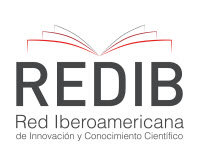THE INFINITE SYMBOLIC POETIC METAPHOR. ALBRECHT DÜRER. MELENCOLIA I
DOI:
https://doi.org/10.33975/disuq.vol2n1.105Keywords:
Symbolic Infinity, Metaphor, Albrecht Dürer, Melencolia I, HumanismAbstract
Considered always as a work, the copper engraving La Melancolía I (1514) contains a considerable amount of philosophical principles of European humanism. In his Anatomy of Melancholy, R. Burton appreciates the engraving of Albrecht Dürer as the most important encyclopedic representation of the melancholic temperament ‡. The idea that engraving is at the head of a series of four paintings dedicated to the four temperaments among which one seems to be missing (that is, that of Adam and Eve of 1504) is probable. For the three famous engravings, The Knight, The Devil and Death (1513), Melancholy (1514) and St. Jerome in his cell (1520), Reveal the mastery and full maturity of the artist. Apparently very different, the engravings are like the part of an imaginary triptych that wants to illustrate the scholastic virtues: moral, theological and intellectual, interpreted by Dürer in the aesthetic expression of the three ways: the knightly way; the monastic way; the real art§. In Melencolia I, cultural pessimism, the path of depth and the feeling of the sublime, evoke the specificity of the Germanic imagination, and no element of this allegorical composition must be its presence at random.















